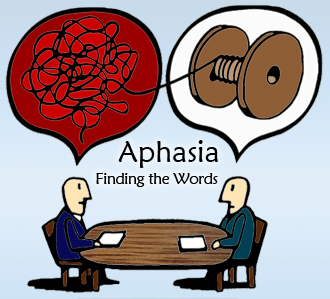Blog
What is Aphasia?
Aphasia is an acquired communication disorder resulting from an injury to the brain, primarily to the left hemisphere. Aphasia affects 1 in every 250 Americans. Aphasia is most commonly caused by stroke; however, it can also result from disease or damage to the language centers of the brain including: traumatic brain injury, brain tumor, or progressive neurological disease. The severity of Aphasia can range from mild, where the individual experiences some difficulty formulating/comprehending language, to severe, where the individual experiences little to no ability to speak/comprehend language.
 Unfortunately, Aphasia is not an isolated disorder affecting only one skill; Aphasia is a family of disorders that involves varying degrees of impairment in four major areas including: expression of spoken language, comprehension of spoken language, written expressive language, and reading comprehension. Deficits in these areas affects an individual’s ability to communicate with their friends, their family, medical professionals involved in their care, and the larger community.
Unfortunately, Aphasia is not an isolated disorder affecting only one skill; Aphasia is a family of disorders that involves varying degrees of impairment in four major areas including: expression of spoken language, comprehension of spoken language, written expressive language, and reading comprehension. Deficits in these areas affects an individual’s ability to communicate with their friends, their family, medical professionals involved in their care, and the larger community.
If you or someone in your family/community is effected by Aphasia, here is a list of tips for creating “Aphasia Friendly” discussions.
- Identify the topic of the discussion

- Maintain eye contact
- Summarize information into short, simple phrases
- Be cautious not to “talk down” to the individual
- Use a reduced rate of speech
- Use writing to facilitate comprehension (i.e. write down key information and writing in large, clear format)
- Avoid use of open ended wh-questions
- Use direct yes/no questions
- Provide choices when applicable
- Maximize use of non-verbal language (e.g. gestures, facial expression, tone of voice, pictures, maps, graphs, etc.)
- Explain/Interpret non-verbal language
- Avoid abstract language, jargon, abbreviations, and ambiguous terms
- Focus on 1 topic at a time
- Distinguish a change in topic via a cue or statement
Remember that Aphasia alone does not impact a person’s intellectual ability, only their ability to communicate. For more information about this acquired language disorder, check out this link from the American Speech-Language-Hearing Association: http://www.asha.org/public/speech/disorders/Aphasia/




